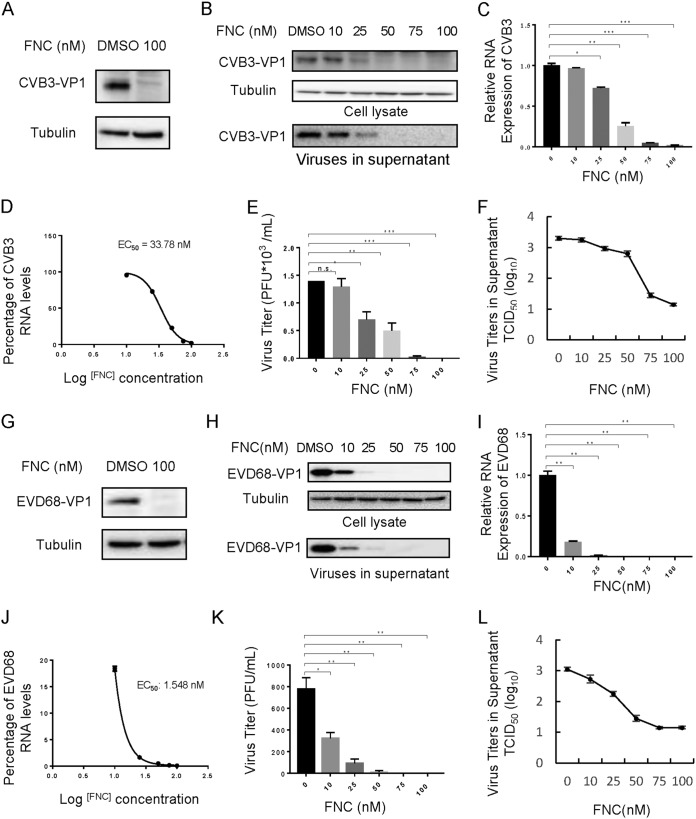FIG 5.
FNC potently inhibits the replication of CVB3 and EVD68 in a dose-dependent manner. (A and G) A 100 nM dose of FNC inhibited CVB3 (A) and EVD68 (G) viral replication in RD cells. (B) The inhibitory effect of FNC on CVB3 replication is in the 10 to 100 nM dose range. The CVB3 VP1 protein in cell lysate or the culture supernatant was detected by WB analysis, and tubulin was used as a loading control. (C) CVB3 RNA levels in the cells from the experiments shown in panel B were detected by RT-qPCR. GAPDH was used as a control. The CVB3 RNA level without FNC treatment was set as 100%. (D) The EC50 of FNC was calculated according to panel C using GraphPad Prism7. (E and F) Viral titers in the supernatants from the experiment shown in panel B were determined by the plaque assay (E) and by the cytopathic effect (CPE) method (F). (H) The inhibitory effect of FNC on EVD68 replication in the 10 to 100 nM dose range. The EVD68 VP1 protein in cell lysate or culture supernatant was detected by WB analysis, and tubulin was used as a loading control. (I) EVD68 RNA levels in the cells from the experiments shown in panel H were detected by RT-qPCR. GAPDH was used as a control. The EVD68 RNA level without FNC treatment was set as 100%. (J) The EC50 of FNC was calculated according to panel I using GraphPad Prism7. (K and L) Viral titers in the supernatants from the experiment shown in panel H were determined by the plaque assay (K) and by the CPE method (L). The results shown are the means with SDs from two independent experiments. The asterisks indicate statistically significant differences between groups, as assessed by Student's t test (*, P ≤ 0.05; **, P ≤ 0.01; and ***, P ≤ 0.001; ns, not significant).

